Description
The painting is based on the biblical episode of the Massacre of the Innocents, described in the Gospel of Matthew. The work shows a series of episodes at the same time but is classically composed with each element carefully mirrored by an answering one. [1]
Two killer soldiers, one portrayed from behind while rushing on a screaming woman, and one kneeling towards the mothers with their children, hold knives in the right hand. The mothers are reacting in different ways: one is screaming and attempting to escape the soldiers who has grabbed her hair, another is fleeing towards the right while embracing her child, while another, in the lower left corner, is holding her child on her shoulders; another mother tries to stop a soldier with her left hand, and a kneeling woman is praying towards the sky above the children which have already been slaughtered.
A short rhyme by the contemporary Giambattista Marino inquired how such a depiction of such a violent event be beautiful art, since: [2]
Do you not see that while the bloody/ throng of children you revive, new death you them give?/ Gentle craftsman know/ even in cruelty, you know well,/ when a tragic event can be also a dear sight,/ and often horror goes with delight.
In The World as Will and Representation , Schopenhauer wrote that Reni made a blunder in this painting by depicting figures crying out. [3] Because painting is a mute art, Schopenhauer believed the silent portrayal of shrieking to be ludicrous, [4] and judged that "...this great artist made the mistake of painting six shrieking, wide-open, gaping mouths." [3]

The Massacreof the Innocents is a story recounted in the Nativity narrative of the Gospel of Matthew (2:16–18) in which Herod the Great, king of Judea, orders the execution of all male children who are two years old and under in the vicinity of Bethlehem. Modern scholarship finds no evidence that it happened outside the passages in Matthew, though it is congruous with Herod's character.
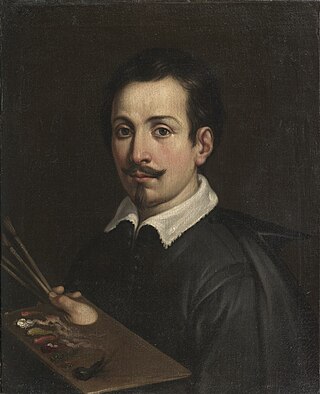
Guido Reni was an Italian Baroque painter, although his works showed a classical manner, similar to Simon Vouet, Nicolas Poussin, and Philippe de Champaigne. He painted primarily religious works, but also mythological and allegorical subjects. Active in Rome, Naples, and his native Bologna, he became the dominant figure in the Bolognese School that emerged under the influence of the Carracci.
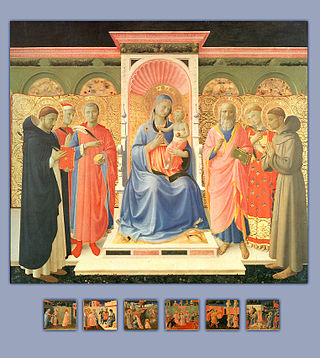
In art, a sacra conversazione, meaning "holy conversation", is a genre developed in Italian Renaissance painting, with a depiction of the Virgin and Child amidst a group of saints in a relatively informal grouping, as opposed to the more rigid and hierarchical compositions of earlier periods. Donor portraits may also be included, generally kneeling, often their patron saint is presenting them to the Virgin, and angels are frequently in attendance.
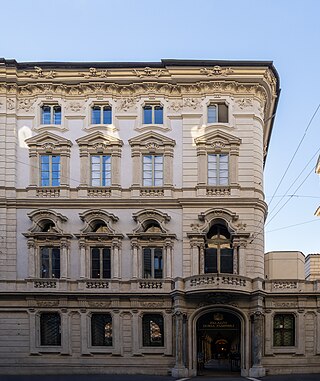
The Galleria Doria Pamphilj is a large private art collection housed in the Palazzo Doria Pamphilj in Rome, Italy, between Via del Corso and Via della Gatta. The principal entrance is on the Via del Corso. The palace façade on Via del Corso is adjacent to a church, Santa Maria in Via Lata. Like the palace, it is still privately owned by the princely Roman family Doria Pamphili. Tours of the state rooms often culminate in concerts of Baroque and Renaissance music, paying tribute to the setting and the masterpieces it contains.
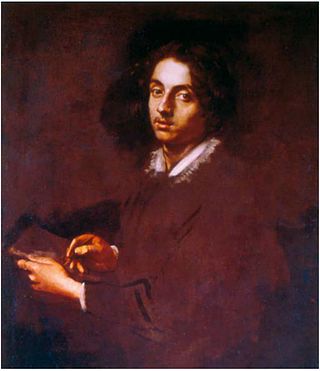
Simone Cantarini or Simone da Pesaro, called il Pesarese was an Italian painter and etcher. He is known mainly for his history paintings and portraits executed in an original style, which united aspects of Bolognese classicism with a bold naturalism.

The Adoration of the Shepherds is the traditional name for a New Testament episode in the story of Jesus's nativity, which is the subject of many works of art. In it shepherds are near witnesses to Jesus's birth in Bethlehem, arriving soon after he is actually born. The episode is recounted, or at least implied, in the Gospel of Luke and follows on from the annunciation to the shepherds, in which the shepherds are summoned by an angel to the scene of the birth. Like the episode preceding it, the adoration is a common subject in art, where it is often combined with the Adoration of the Magi. In such cases it is typically just referred to by the latter title.

Elisabetta Sirani was an Italian Baroque painter and printmaker who died in unexplained circumstances at the age of 27. She was one of the first women artists in early modern Bologna, who established an academy for other women artists.

The Massacre of the Innocents is the subject of two paintings by Peter Paul Rubens depicting the episode of the biblical Massacre of the Innocents of Bethlehem, as related in the Gospel of Matthew (2:13–18). The first, measuring 142 x 182 cm, was painted after his return to his native Antwerp in 1608, following eight years spent in Italy.

Szymon Czechowicz was a prominent Polish painter of the Baroque, considered one of the most accomplished painters of 18th century sacral painting in Poland. He specialized in sublime effigies of painted figures. His establishment of a school of painting gives him a great influence on Polish art.

The Basilica of San Domenico is one of the major churches in Bologna, Italy. The remains of Saint Dominic, founder of the Order of Preachers (Dominicans), are buried inside the exquisite shrine Arca di San Domenico, made by Nicola Pisano and his workshop, Arnolfo di Cambio and with later additions by Niccolò dell'Arca and the young Michelangelo.

The Nativity of Jesus has been a major subject of Christian art since the 4th century.

The National Art Gallery of Bologna is a museum in Bologna, Italy. It is located in the former Saint Ignatius Jesuit novitiate of the city's University district, and inside the same building that houses the Academy of Fine Arts. The museum offers a wide collection of Emilian paintings from the 13th to the 18th century and other fundamental works by artists who were in some way related to the city.
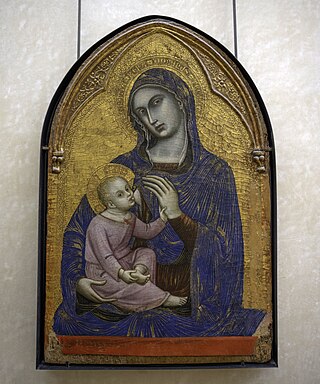
The Nursing Madonna, Virgo Lactans, or Madonna Lactans, is an iconography of the Madonna and Child in which the Virgin Mary is shown breastfeeding the infant Jesus. In Italian it is called the Madonna del Latte. It was a common type in painting until the change in atmosphere after the Council of Trent, in which it was rather discouraged by the church, at least in public contexts, on grounds of propriety.

The Galleria Spada is a museum in Rome, which is housed in the Palazzo Spada on Piazza Capo di Ferro. The palazzo is also famous for its façade and for the forced perspective gallery by Francesco Borromini.
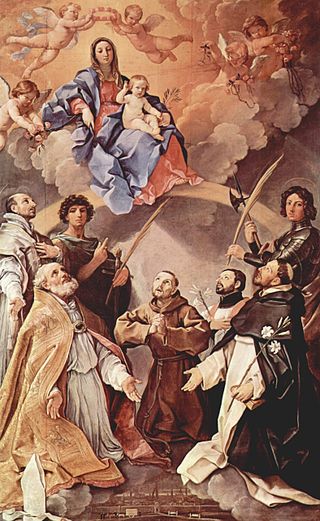
The Pala della Peste or Pallione del Voto is an oil on silk Baroque-style altarpiece by Guido Reni depicts the Madonna and Child in Glory with the Patron Saints of Bologna: Petronius, Francis, Ignatius, Francis Xavier, Proculus of Bologna, and Florian.

L'Aurora (Aurora) is a large Baroque ceiling fresco painted in 1614 by Guido Reni for the Casino, or garden house, adjacent to the Palazzo Pallavicini-Rospigliosi, in Rome. The work is considered Reni's fresco masterpiece.
Santa Maria in Via is a Baroque style Roman Catholic church and Marian Shrine in Camerino, in the province of Macerata, region of Marche, Italy.

Several oil-on-oak-panel versions of The Massacre of the Innocents were painted by 16th-century Netherlandish painters Pieter Bruegel the Elder and his son Pieter Brueghel the Younger. The work translates the Biblical account of the Massacre of the Innocents into a winter scene in the Southern Netherlands in the prelude to the Dutch Revolt against Spanish rule, also known as the Eighty Years' War.

Adoration of the Shepherds is the title of a lost drawing by Raphael, described in a letter of 8 September 1508, from Raphael to his friend Francesco Raibolini alias Francesco Francia. This letter's contents were first published in 1678, in Carlo Cesare Malvasia's book Felsina Pittrice. Malvasia gave a full account of the letter, which he claimed to have found among the papers of Count Antonio Lambertini in Bologna. While the existence and contents of the letter are disputed, according to Malvasia it described the delivery of a drawing of the Adoration of the Shepherds to Francesco Francia. This drawing has been considered lost or never to have existed.

The Death of Dido is a 1631 oil-on-canvas painting by the Italian Baroque painter Guercino, commissioned by Cardinal Bernardino Spada for Maria de' Medici. It now hangs in the Galleria Spada in Rome.



















